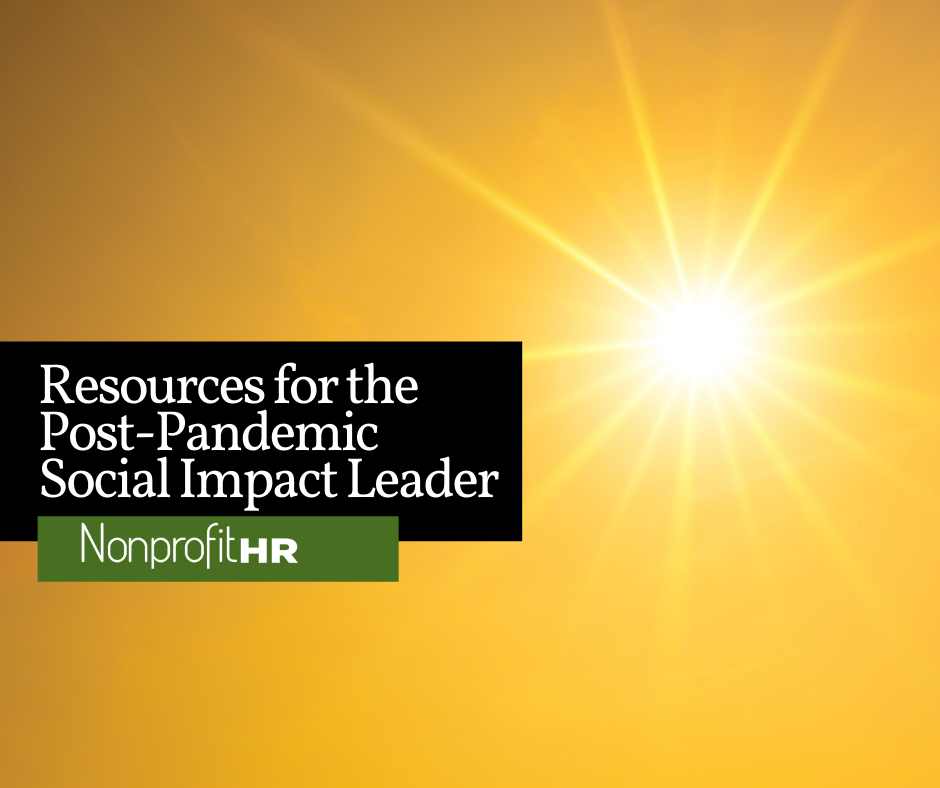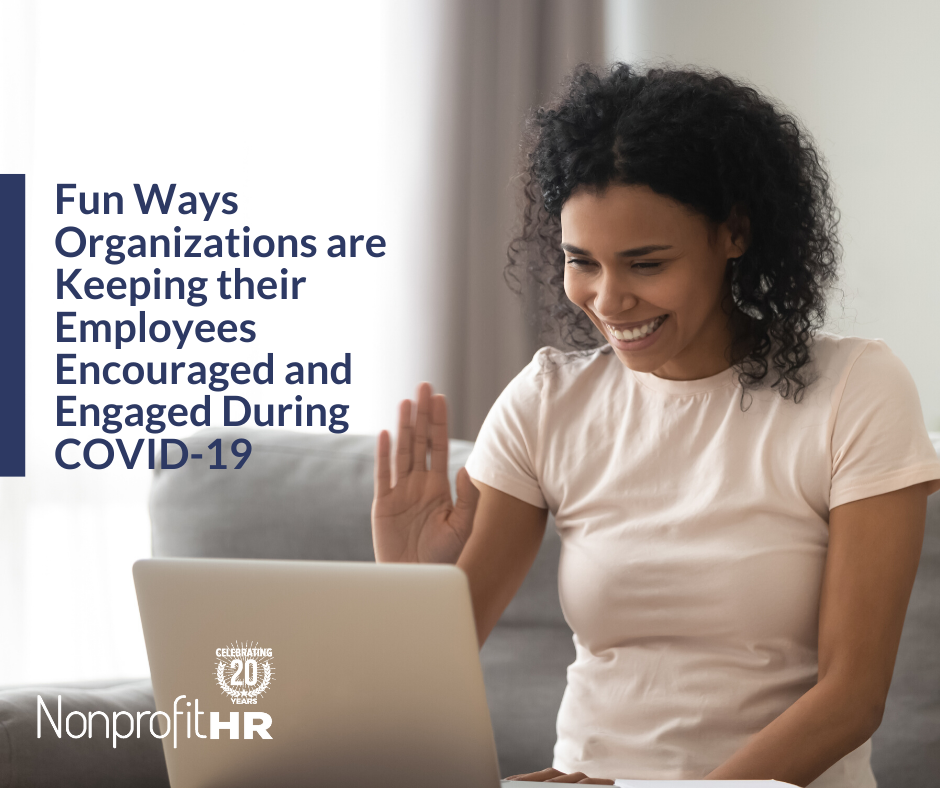WTOP: 5 ways nonprofits can…
Millennials are now the largest group in the workforce. More than one in three workers were born sometime between the early 80s and the early 2000s, and on the whole, they are different from the generations before them in some key ways.
We’ve all heard our fair share of generalizations about this generation, which the White House reports is the most diverse and most educated generation in our country’s history. Some of the more common ones include:
- Millennials are the first to live their entire lives completely plugged in, so they are very technologically savvy and quick to pick up on new trends and skills.
- Individualism is important to millennials, but they are also team players who view themselves as part of a larger, global picture and eagerly seek to find their place in it.
- While they are concerned about the future, Millennials are more interested in life experiences and having fun in the moment than material things.
- Millennials want frequent praise at work and are impatient with the idea of “paying their dues” or “moving up the corporate ladder.”
While these stereotypes may have some truth to them, it’s important to resist grouping all Millennial employees into one category. Every person, no matter what generation they were raised in, will have their own unique goals, expectations and preferences at work, and they may not always fit with the generalizations associated with their peers.
But by taking generational differences into account and making changes to better accommodate the Millennial mindset, you’ll be able to better understand and avoid the average Millennial tenure of just two years (compared to five years for Generation X-ers and seven years for Baby Boomers) and retain your top performing Millennial employees longer. Here are a few ways to do just that:
Embrace a lattice model of professional development
Millennial employees tend to care less about money and more about feeling fulfilled. For this reason, many employers are embracing a “lattice” model as opposed to the traditional “ladder” model of professional development. The ladder model suggests that the only way to advance in an organization is to work your way up through positions requiring increasing levels of responsibility and seniority, but the lattice model proposes that advancement can be made laterally, by moving into new roles and functional areas.
Especially in small organizations, a direct upward move may not be likely for up-and-coming Millennial employees or may take a long time to become a realistic possibility. Providing opportunities to explore new skills and areas of your organizations through lateral moves (think diversity of work) will help keep younger employees interested in your organization and fulfilled in their work. It may even ultimately keep them from jumping ship. According to the Harvard Business Review, six in 10 Millennials indicated that they are open to new job opportunities, and 93 percent of workers left their previous employer when they last changed roles. But that second number could be much lower if employees were given more opportunities to grow with their current employers.
And if you need one more reason to focus on lattice models of professional development, consider this: one of the key factors separating the organizations that made the NonProfit Times’ 2016 list of best nonprofit workplaces from those that did not was the encouragement of growth or advancement opportunities for employees within the organization.
Offer learning opportunities beyond standard on-the-job training
Your nonprofit may offer stipends for professional development, but if your organization is like most, the budget for those stipends is likely small. Luckily, there are cost-effective ways to offer valuable learning opportunities to your employees who are eager to grow.
Consider working with Millennial employees to create stretch goals and set a plan for achieving them. These goals require extending oneself and really working toward something that may be outside of an employee’s comfort zone. Once stretch goals are set, make mentorship relationships available in which more senior employees who has a already achieved similar goals takes Millennial employees “under their wings” to help guide them in the right direction.
You might also create opportunities for Millennial employees with niche skill sets to share their expertise with other employees who express interest. For example, if someone is particularly skilled in oral or written communication, fundraising, or perhaps something more technical like coding, encourage them to hold an in-house training session or lunch and learn. Training sessions can provide powerful professional development opportunities for the trainer and the employees who come to learn.
Also, remember that Millennial employees who join the workforce immediately after completing their undergraduate degrees may intend to attend graduate school in the future. Discuss these goals with your staff, and be willing to work with them to create opportunities to work part-time while pursuing grad school or return to your organization in a new capacity once they’ve received a more advanced degree.
If your nonprofit can make it work financially, tuition assistance can help you keep your best employees on board even as they pursue advanced degrees. CAP Tulsa, Wounded Warrior Project and Pathway Homes offer some sort of tuition reimbursement to staff, and all three organizations report a positive impact on employee retention. Employees with advanced degrees can bring a fresh perspective and new expertise to your mission, and their desire to pursue higher education shouldn’t mean they have to leave your organization for good.
Provide frequent, actionable feedback
According to the Harvard Business Review, 71 percent of Millennials are not engaged in their current roles, which makes them the least engaged subset of the workforce. Poor performance feedback methods that aren’t tailored to the needs of Millennials are at least partially to blame.
In a recent blog, we discussed the end of the traditional annual performance review and its evolution into more frequent, transparent and actionable methods for providing feedback. This trend is a response to Millennial preferences and work styles, and we expect it will continue to grow as Millennials become an even larger part of the workforce. Luckily, companies like Fizz are responding by creating tools that streamline employee feedback and make it easy to provide the ongoing, on-demand feedback Millennial employees crave.
Millennials are often stereotyped as the generation that received constant praise growing up (whether they deserved it or not) and therefore continues to expect it. Of course, everyone likes praise, but even Millennials understand that constructive feedback is necessary for professional growth. Whether you’re still using annual reviews, implementing real-time feedback tools, or something in between, view performance feedback as a coaching opportunity rather than a critique, and as a result, your Millennial employees will be more likely to focus their desire to advance within your organization as opposed to outside of it.
Does changing your approach to things like career advancement, learning and development and employee feedback feel like a lot for your organization to swallow? While you should certainly take the unique needs of Millennial employees into account, you don’t need to change everything about your organization overnight to accommodate this growing segment of the workforce. Always put your mission, goals and culture first as you make decisions about changes to your people practices. If a change feels misaligned with your mission, consider alternatives that may keep your Millennial employees engaged, and talk to them about how their goals align with your organization’s mission before making any drastic shifts.
If you’re interested in learning more about how you can adapt your organization to address the needs of the growing Millennial workforce, don’t hesitate to contact us. Our culture & engagement, performance management and learning & development practices can help you to attract, engage and retain Millennial (and other) employees who are becoming increasingly crucial to the advancement of your mission.





























